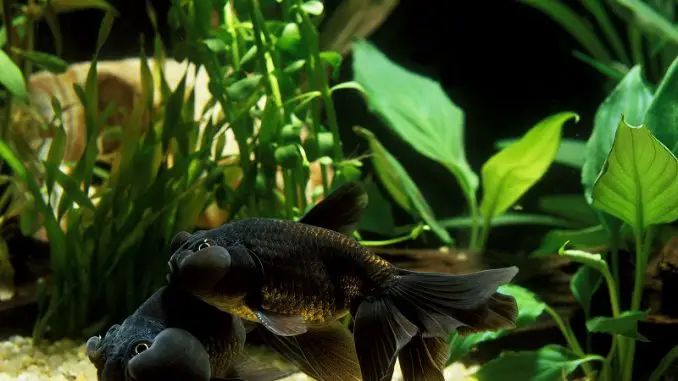
Dwarf Sagittaria is a great choice for planted aquariums. Even beginners will succeed at growing this aquatic plant that is hardy and forgiving in a variety of water parameters. Dwarf Sagittaria grows quickly and thrives both fully and partially submerged.
You’ll enjoy watching Dwarf Sagittaria peek its leaves above the water’s surface, and seeing your aquarium friends enjoying the cover of this lush plant. Live plants do add a little extra spark to a community tank that is just not possible with plastic plants.
You may need to keep an eye on this freshwater plant so that it does not run rampant in your tank, but we think you’ll see the Dwarf Sagittaria as a positive addition. In this article, we will discuss all the important facts about Dwarf Sagittaria, including how to plant and care for them, the benefits of Dwarf Sagittaria, and how to enjoy it as a helpful presence and not a hindrance.
TABLE OF CONTENTS
Dwarf Sagittaria Facts & Overview
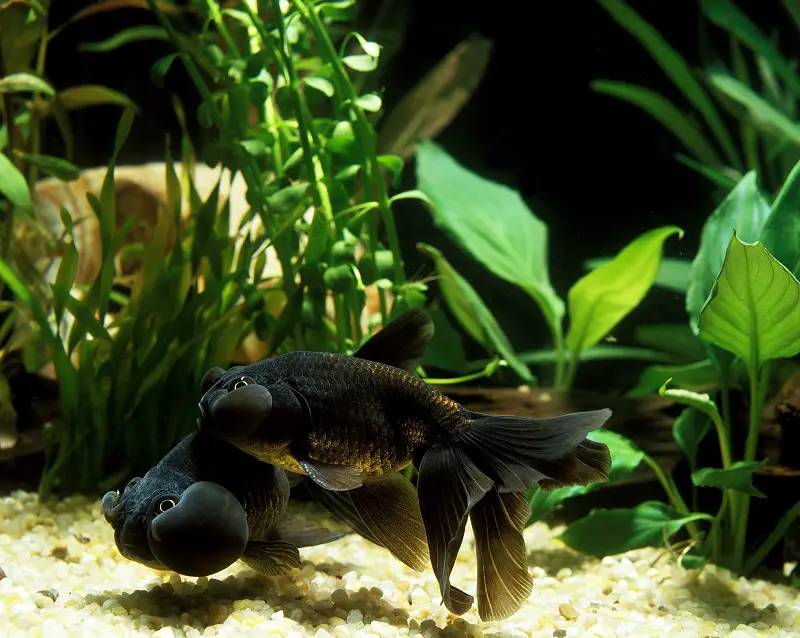
| Category | Rating |
| Care Level: | Easy |
| Lighting: | Moderate |
| Color Form: | Green |
| Placement: | Mid-ground |
| Size: | 4-6 inches |
| Supplements: | Aquarium and substrate fertilizers |
| Family: | Alismataceae |
| Minimum Tank Size: | 5 gallons |
| Propagation: | Runner |
| Tank Set-Up: | Freshwater |
Also known by the monikers Awl-leaf Arrowhead, Hudson Sagittaria, and Ribbon Wapato, the Dwarf Sagittaria is a fast-growing plant that forms dense clusters as it runs through your aquarium.
Its scientific name is Sagittaria subulata, and it looks like grass with little rounded leaves. Although each Dwarf Sagittaria is only about 4-6 inches (10-15 cm) in height, when they cluster, they spread over the tank like grass covers your lawn.
Dwarf Sagittaria is a hardy plant that adapts to myriad water conditions and to put it bluntly, is hard to kill. It’s a good plant for novice aquarists. As an amphibious plant, it grows both fully submerged and partially submerged.
Propagation occurs when the Dwarf Sagittaria produces multiple runners. Best planted in the foreground, you may need to change out your Dwarf Sagittaria now and then.
The Dutch first experimented with breeding the dwarf form of the Sagittaria more than 40 years ago, and now the Dwarf Sagittaria is quite popular among aquarists.
Habitat of Dwarf Sagittaria
Dwarf Sagittaria originates in some areas of South America as well as the Atlantic coast of North America along estuaries, marshes, and shallow waters. In North America, you will find them along the shores of Connecticut, Florida, Georgia, Massachusetts, New Jersey, North Carolina, and South Carolina.
In South America, you will find Dwarf Sagittaria in Colombia and Venezuela. In some areas, such as The Azores in Portugal, Great Britain, and Java, Indonesia, it is considered to be an invasive species. Dwarf Sagittaria does well in freshwater and brackish water, hence its appearance in estuaries.
Appearance
The Dwarf Sagittaria, a perennial plant, has short leaves that look like tiny arrows and range in size from .04 to .28 inches (1 to 7 mm). The whole plant is 4 to 6 inches (10 to 15 cm) tall, and the color is bright green.
When the Dwarf Sagittaria grows underwater, tiny white flowers that are about .4 inches (1 cm) in size grow on thin, light green stalks.
Each stalk has both female and male flowers; the females carry the seeds. Usually, there are 1 to 2 female flowers and 2-5 male flowers.
Fun fact: When the Dwarf Sagittaria grows in the wild, its leaves grow much larger when the water dries out and it is growing in a non-aquatic setting. Instead of being .04 to .28 inches (1 to 7 mm), the leaves grow 1 to 2 inches (2.5 to 5 cm), and the stalk is even longer than that.
The shape of the Dwarf Sagittaria plants are rosettes; the roots are white and grow into the substrate, about 2 to 3 inches (5 to 8 cm) deep. Other types of Sagittaria sublata have a similar basal rosette structure, which means that the leaves make a circle at the base of the stem and form a pattern that looks like a rose.
Types of Sagittaria Subulata
The scientific name Sagittaria subulata refers to about 45 different types of species, as well as some variations that are often mistaken for Dwarf Sagittaria.
One example is the Narrowleaf Sagittaria, the scientific name Sagittaria subulata var. gracillima, which looks almost identical to the Dwarf Sagittaria when it is young. The leaves, especially, are almost the same size.
However, when the Narrowleaf reaches its full-grown size, it can grow up to 15 inches (40 cm). If you have a 15-gallon tank and you plant Narrowleaf Sagittaria instead of Dwarf Sagittaria, you will have some trouble on your hands.
You don’t want to plant a Narrowleaf Sagittaria in the foreground because you will not be able to see anything behind it. If you plant a Narrowleaf Sagittaria in the foreground thinking it is a dwarf, the placement will be wrong, and you might not even have enough room in your tank for a 15-inch plant.
You can discern between the two by looking closely at the color. Although they are both green, the dwarf has a lime hue, while the Narrowleaf is a deeper green.
Another variety is the Sagittaria subulata var. kurziana or Broadleaf Sagittaria. Visually, it is easy to distinguish the Broadleaf from the Dwarf, as the former has–you guessed it–broad leaves, while the Dwarf has narrow, arrow-shaped leaves.
The Broadleaf Sagittaria is more often used as a decorative plant and has much longer leaves, 8 to 12 inches or 20 to 30 cm long.
See related: clown killifish care
Benefits of Dwarf Sagittaria
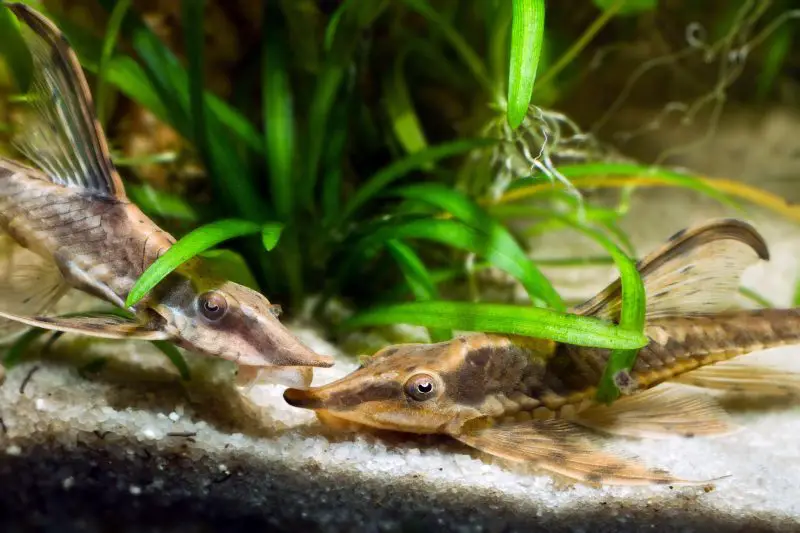
Dwarf Sagittaria are not just nice to look at; they also have positive effects on your aquarium.
- Ambiance: Dwarf Sagittaria have a lovely appearance and creates a nice feel for your aquarium. They make a stunning aquascape.
- Breeding: Egg scatterers will use the Dwarf Sagittaria’s carpet as a breeding spot.
- Nutrients: Biofilm grows on the Dwarf Sagittaria, providing a source of food for shrimplets and fry.
- Oxygen: Like other aquarium plants, Dwarf Sagittaria oxygenates the water.
- Powerful roots: The deep roots of the Dwarf Sagittaria break up harmful gas pockets that can develop in the substrate of your tank.
- Refuge: The Dwarf Sagittaria creates a carpet that fish and invertebrates will use to take cover and hide.
Habitat and Tank Conditions
Dwarf Sagittaria can tolerate hard water as well as water with organic substances. They also thrive in any type of water temperature and don’t require the water temperature to be maintained. Dwarf Sagittaria are also amenable to any tank size.
Tank Size
With a minimum of 5-gallon tank size, Dwarf Sagittaria can be grown in a nano tank, but just as easily can be grown in a large tank. Of course, if you are using a smaller tank, you will need to prune and trim more often so that the Dwarf Sagittaria does not take over the aquarium.
Water Conditions
Dwarf Sagittaria are adaptable to a variety of water parameters, from temperature to pH to GH.
Ideal Parameters:
- Temperature: 68 to 82 °F (20 – 27 °C) *Dwarf Sagittaria will continue to thrive at temperatures below the ideal range.
- pH: 6.0 – 8.0 pH is ideal, but again, these plants will do just fine outside these parameters
- Hardness: 2-15 GH, meaning they do well in both hard and soft water.
Lighting
Moderate lighting is ideal for Dwarf Sagittaria. Avoid bright light, which will discolor the Dwarf Sagittaria and may even melt it.
Low levels of light will not harm the Dwarf Sagittaria but will result in slower growth and as the plants stretch for more light, they will grow taller, too.
Substrate
Because Dwarf Sagittaria are root feeders, they need fertilizer to better absorb nutrients sourced in the water column. You can offer both a substrate and an aquarium fertilizer.
They need a nutrient-rich substrate, as they are prone to iron deficiency. One signal of a lack of iron is yellow or discolored leaves.
It is possible to inject CO2 into the Dwarf Sagittaria for faster growth, but if you decide to do this, you will need to increase the light and fertilizer so that the tank remains balanced and there is not an overgrowth of algae.
Planting Dwarf Sagittaria
You have a little control over how you want your Dwarf Sagittaria to look and grow. If you want a shorter, fuller carpet effect, you should plant it in the front part of the tank and limit light to keep it from growing too tall.
Be careful, though, because if you starve it of too much light, it will actually grow taller in a desperate search for light.
On the other hand, if you want a taller plant, you can plant it in the back part of an aquarium that is well lit, and it will grow taller.
Generally, aquarists plant the Dwarf Sagittaria in the middle of the tank: if you leave lots of space between the plants, the leaves will be shorter. If you plant them close together, they will grow vertically.
Growth and Propagation
The aquarium hobbyist need not do much to encourage the Dwarf Sagittaria to propagate. It grows all by itself, and quickly. (This fact is one reason the Dwarf Sagittaria is known as an invasive species in many places where it grows wild.)
Dwarf Sagittaria grow runners and carpet the tank floor. To control the spread, you can simply pinch off the overgrown runners and replant them where you want. (You could also plant them in a second tank or give them to friends, but be sure to quarantine the plants before introducing them into another aquarium.)
A few weeks after you plant the first Dwarf Sagittaria, you will see the runners begin to grow. As with most plants, regular pruning and trimming encourages new growth and results in the lawn-like aquascape many hobbyists are searching for.
Issues to watch out for with Dwarf Sagittaria:
Melt: Although Dwarf Sagittaria are hardy plants, they are sensitive to certain changes. If they are transferred to another tank and are somehow damaged, their leaves may melt.
Additionally, Dwarf Sagittaria are able to grow immersed (completely underwater) or emersed (beginning under the water but breaking the water line and growing above it.) If a Dwarf Sagittaia’s conditions are changed from immersed to emersed or vice versa, the plant could experience melt.
The Dwarf Sagittaria’s leaves will grow again once they have adapted to the new conditions.
Relocation: If you need to move your Dwarf Sagittaria, do so with caution. The roots are very strong and pulling up the plant could damage the substrate. Cutting it off could produce a better result than pulling it up.
Rot: Although the Dwarf Sagittaria does grow deep into the substrate, if it digs too deep, it will begin to rot at the crown. When this happens, you should think about getting a new Dwarf Sagittaria, as one with crown rot is not likely to survive because the root and stem will be unable to absorb the necessary nutrients.
Yellow leaves: Iron deficiency is the probable culprit of discolored or yellow leaves. Low iron levels rob the Dwarf Sagittaria of its rich green color, replacing it with a decaying yellow.
Test iron levels often and use iron supplements when necessary to prevent leaf discoloration.
Pro tip: Make sure to look at the iron needs of your other aquarium inhabitants, who might get sick if too much iron is introduced into the aquarium.
Tank Mates
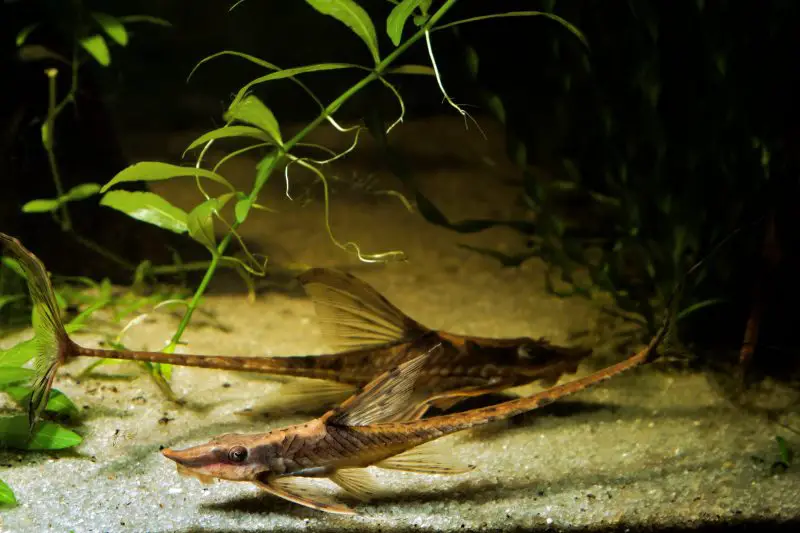
Depending on how you want to curate your aquarium, you could choose to pair Dwarf Sagittaria with plants that have a different growth habit, such as Anubias nana, Glossostigma, or Monte Carlo.
As far as fish and invertebrates go, the best tank mates are peaceful creatures that will not eat it or tear it to shreds. Livebearers, shrimp, and snails are good choices. You should stay away from aggressive fish that may try to dig up the roots of the Dwarf Sagittaria, as well as fish that will tear up and consume these beautiful plants.
Suitable tank mates for Dwarf Sagittaria:
- Amano Shrimp
- Bamboo Shrimp
- Black Rose Shrimp
- Blue Tiger Shrimp
- Blue Velvet Shrimp
- Cherry Barb
- Crystal Red Shrimp
- Ghost Shrimp
- Green Jade Shrimp
- Green Swordtails
- Guppy
- Japanese Trapdoor Snails
- Malaysian Trumpet Snails
- Mystery Snails
- Neon Tetras
- Nerite Snails
- Orange Sakura Shrimp
- Otocinclus Catfish
- Pygmy Cory Catfish
- Ramshorn Snails
- Rasboras
- Red Cherry Shrimp
- Rili Shrimp
- Snowball Shrimp
- Vampire Shrimp
Incompatible tank mates for Dwarf Sagittaria:
Care and Maintenance
Perhaps the best thing you can do to care for your Dwarf Sagittaria is to keep it trimmed and pruned. This encourages fast growth, allowing you to create the coveted blanket more quickly. It also ensures the health of both the Dwarf Sagittaria and the other aquarium inhabitants.
It is also important to care for the other creatures in your aquarium so that the whole biosphere is healthy and stress-free. If you are introducing Dwarf Sagittaria into an established tank, it is imperative that you quarantine the plant before adding it to the tank.
Conversely, if you are adding a new fish or shrimp to a tank that is already growing Dwarf Sagittaria, you should quarantine the fish before exposing the Dwarf Sagittaria.
When trimming the Dwarf Sagittaria, it is important to remember that it is a rosette plant, so all the leaves emerge from the center of the plant. These are damaged when you trim the leaves, and they will grow back smaller. As you trim, you might consider the long-term effects of doing so. Smaller rosettes are not necessarily bad, but it’s a result that you should be aware of in advance.
Because Dwarf Sagittaria are notoriously poor at absorbing nutrients from the water column, it will likely be necessary to provide substrate and aquarium fertilizer for your Dwarf Sagittaria. Additionally, as we mentioned before, Dwarf Sagittaria are highly susceptible to iron deficiency, so proper care will involve regular testing of iron levels and likely iron supplements.
Finally, be mindful of the lighting level for the Dwarf Sagittaria. A light that is too bright or direct will cause discoloration or even melting, whereas light that is too dim may actually cause the Dwarf Sagittaria to grow taller in a vain attempt to locate the light.
Also, depending on what part of the aquarium you want to plant your Dwarf Sagittaria, and how you want it to grow, the light requirements will vary.
See related: gulper catfish care
Is Dwarf Sagittaria Suitable for Your Aquarium?
Dwarf Sagittaria is a delightful addition to any size aquarium. We consider them to be a good live plant choice because they are hardy plants that grow easily and are forgiving when it comes to variations in water parameters.
Seasoned aquarists love the aquascape the Dwarf Sagittaria creates, and novice hobbyists love that they are easy to grow and care for. And your aquarium inhabitants appreciate the many benefits that come with the Dwarf Sagittaria!
Does Dwarf Sagittaria give your tank that extra spark you have been searching for? Let us know what you love about Dwarf Sagittaria!

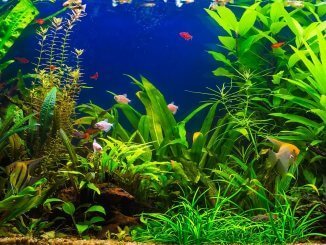
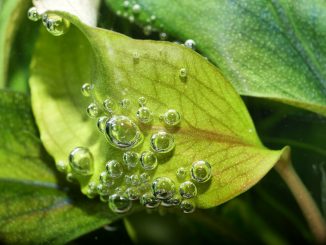
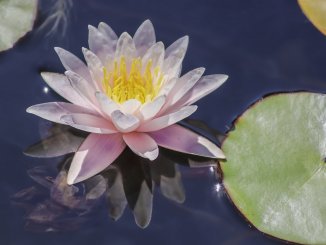
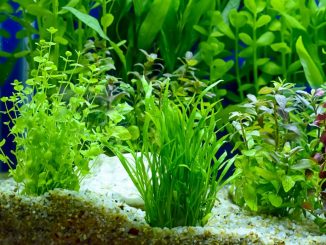
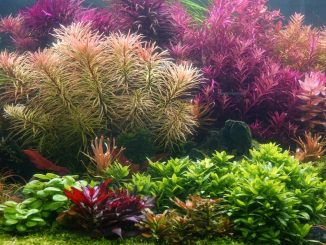
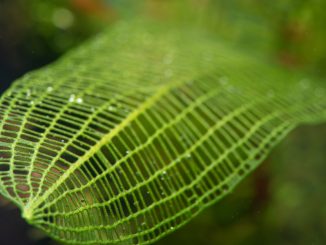
Be the first to comment